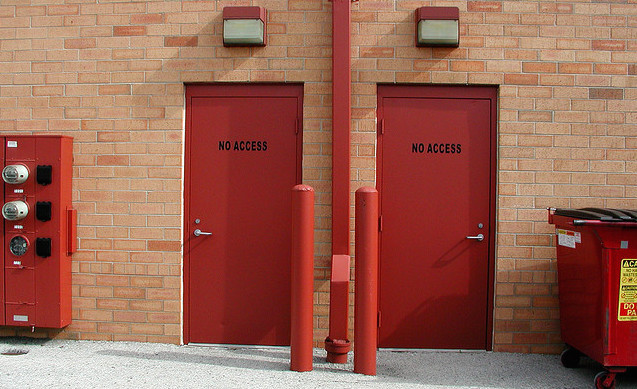This month the Culture Republic podcast is looking at audiences who are experiencing social exclusion in Scotland.
Poverty and deprivation have been part of Scotland’s social and political mix for centuries, especially in the West of Scotland, where historically poverty has been most endemic. In the past, the arts have responded with things like the Citizen Theatre’s commitment to tickets for 50 pence, socially engaged work from companies like 7:84 theatre company or the Third Eye Centre’s touring programme — the impact of which reached across the whole of rural and urban Scotland. In this episode, we look at the contemporary work that artists are doing with audiences experiencing social exclusion.
The research
Social exclusion is more than just poverty. The Government’s Social Exclusion Unit defines it as what “happens when people or places suffer from a series of problems such as unemployment, discrimination, poor skills, low incomes, poor housing, high crime, ill health and family breakdown”.
There is a lot of information available via the Scottish Index of Multiple Deprivation (SIMD). A free resource that anyone can use. The Index uses this series of problems, to identify area concentrations of multiple deprivation, and a scale to show which areas are more or less deprived than others. The combined factors are as follows:
- Access – to public amenities (ex: shops, GP, schools)
- Crime – levels of assault, burglary, violence, vandalism
- Education – based on absence, performance, training & qualifications
- Employment – accounts for benefits, support, allowances
- Health – compares mortality rates, illness, hospital stays, drug / alcohol misuse
- Housing – accounts for central heating access, HH size vs. occupancy
- Income – includes tax credit, job seekers, income support and pension credit
And it is the mix of these factors that gives a richer picture of the root of a problem in an area, for example Crime may be the root cause in one deprived area, while housing and income may be more of a factor in another. This makes the experience of social deprivation unique to each individual. We can, however, see how the patterns of deprivation impact whole communities in particular ways in different areas of the country. It is also important to note that not everyone who lives in a deprived area is deprived, and not all deprived individuals live in deprived areas.
Households in the most deprived areas of Scotland are more likely to have school age children in the home, more likely to access benefits or income support and more likely to be in socially rented housing. For those living in areas of high deprivation, it takes on average three times as long to reach a GP than those living in areas of least deprivation. Crime levels are polar opposites at each end of the deprivation scale, and the high presence of derelict sites in the most deprived areas is detrimental to communities. All of these will naturally impact how people access arts and culture.
The majority of the most socially deprived zones are across the central belt of Scotland, although there is at least one zone in all local authorities in mainland Scotland. The communities are a mix of urban and rural. The West of Scotland has the highest prevalence with almost half (44%) of the population experiencing social exclusion. Just about two thirds (67%) of the most socially deprived zones in the country are clustered in Glasgow and the West of Scotland.
In the context of this complexity, it is important for organisations to understand local patterns of exclusion because it will strongly impact how and why people connect with their work and organisations.
This month Culture Republic talked to Rob Gallagher from Impact Arts, a community arts organisation that uses the arts and creativity to enable and empower social change, and Kate Wimpress from North Edinburgh Arts, an arts venue in Edinburgh’s Fourth Ward. Both of these organisations have been working with socially excluded communities for decades. Rob drew on his experience delivering projects for children and young people, especially in the East End of Glasgow and across the West of Scotland. Kate highlighted NEA work in their garden space and with families and young people.
Across both interviews a number of key themes arose, including: the necessity of working in partnership with other agencies and third sector organisations; removing barriers to access or participation including cost, physical access / transport and significantly building confidence to remove any emotional barriers to participation.
What came through strongly was the importance of long term commitment to building relationships – with audiences and partners. The issues related to social deprivation are so complex that one-off interventions are likely to have limited success.
CREDITS
Listen on Soundcloud above or subscribe on iTunes or on Stitcher.
Thanks to North Edinburgh Arts and Impact Arts for sharing their stories. Reach them on Twitter @northedinarts and Impact Arts @impact_arts.
Culture Republic is @culture_public on Twitter and presenter Ashley Smith Hammond is @AnAshleyAbroad. Use the hashtag #CRpodcast to let us know you’re listening.
Audio production by studio engineer Barry Reid – on Twitter @barryspad.
In and out music by Drew Hammond of Mesura Music – he is @DrYouHammond on Twitter.
This podcast is about how arts and cultural projects and products are reaching out to connect with different segments of the Scottish population. Please help us spread the word by rating and reviewing this podcast or sharing it on social media.
Main image credit: Untitled photo by Tim (CC BY-NC-SA 2.0).